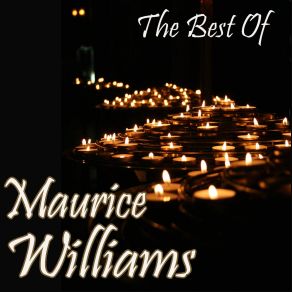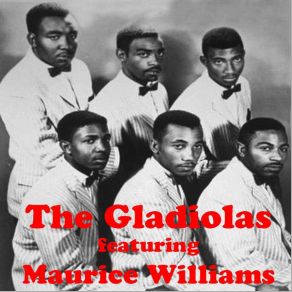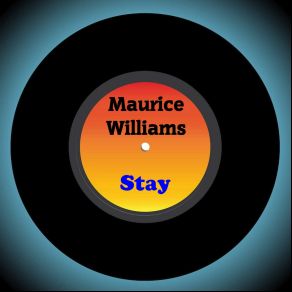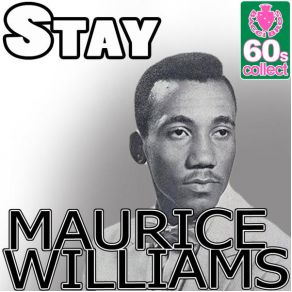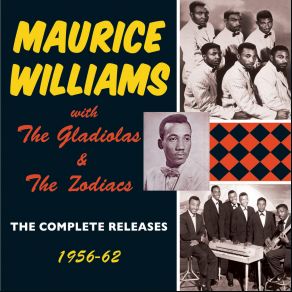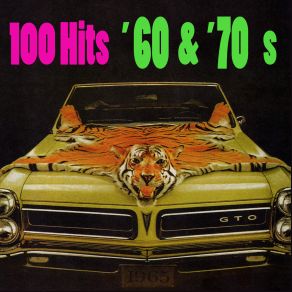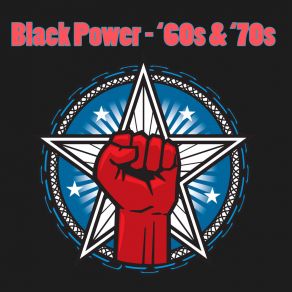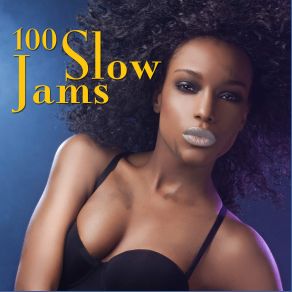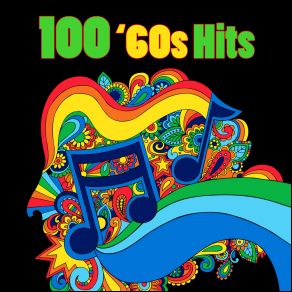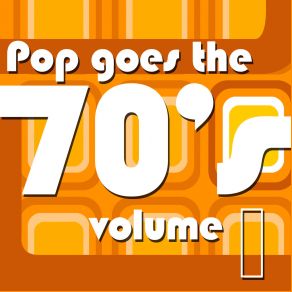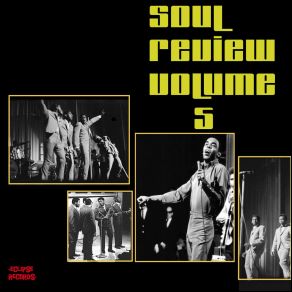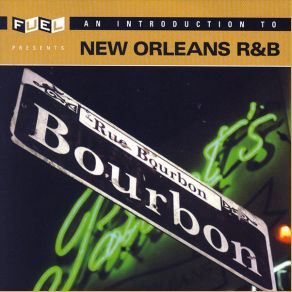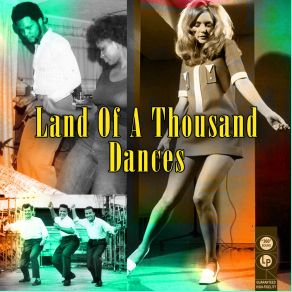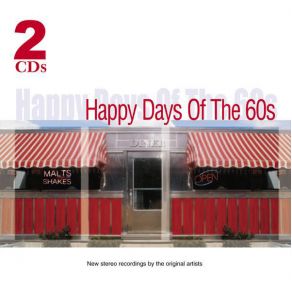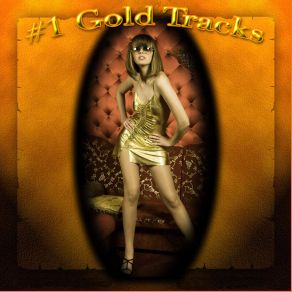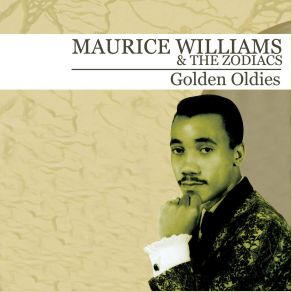Maurice Williams
Wikimp3 information about the music of Maurice Williams. On our website we have 18 albums and 70 collections of artist Maurice Williams. You can find useful information and download songs of this artist. We also know that Maurice Williams represents Hip Hop/R&B genres.
Biography
[Edit]Maurice Williams is one of the most extraordinarily durable figures in the history of classic R&B and rock & roll, despite the fact that, as a performer, he only ever racked up one major national hit on the pop charts. That song, "Stay," became one of the classic singles in the history of rock — a number one hit upon its release in 1960 on Al Silver's Herald label, and a popular favorite for decades since, revived in 1987 with its prominent use in the movie Dirty Dancing. Maurice Williams & the Zodiacs recorded only two more minor pop hits before they disappeared from the charts, but Williams has remained active as a performer and, periodically, as a recording artist and songwriter ever since.
Williams was born in Lancaster, SC, on April 26, 1938, and showed himself musically inclined from a very early age — he started learning the piano from his older sister in the late '40s, practicing daily so that by the time he was ten years old he was having friends from elementary school over for informal jam sessions at his house. Williams had sung in church, but his interest lay more in popular music, and in 1953, he and his friends were ready to form a group that they called the Royal Charms. The group's original membership, in addition to Williams, included Earl Gainey (tenor, guitar), Willie Jones (baritone), William Massey (tenor, baritone, trumpet), and Norman Wade (bass). They played school events and talent shows, winning several and acquiring a local following, before they finally got a paying gig at the local Veterans of Foreign Wars post. The year they'd started out, 1953, Williams had also written two songs that were to have a pivotal effect on his life and career, and the group's history: "Little Darling" and "Stay."
The Royal Charms loved performing, and were popular locally, but working the area around Lancaster, they found their prospects limited. The group's first real break took place in 1956 when a Nashville disc jockey hooked them up with Ernie Young, the head of Excello Records — Williams, then only 16, bluffed his way into an audition over the phone and then had to raise money from friends and local merchants in Lancaster to make the trip to Nashville in December of 1956.
"Little Darling" impressed Young, although he altered it somewhat, giving the song a calypso beat that it didn't originally have. He also insisted on the group changing its name — it seemed as though every R&B vocal group (the word "doo wop" hadn't been invented yet) had either "Royal" or "Charms" in its name, and bird-named groups were too common as well. Young happened to like flowers, and selected the name the Gladiolas.
"Little Darling" by the Gladiolas was released by Excello in January of 1957 and was a hit on the R&B charts, rising to number 11 in a four-week run in the early spring of that year. It had a more muted presence on the pop charts, lingering there for 11 weeks but never getting higher than number 41.
What happened next is a matter of interpretation. In some historians' eyes, the Gladiolas' version of the song was undercut by a competing rendition, recorded for Mercury by a white Canadian group called the Diamonds, which rose to number one on the pop charts and sold more than a million copies, even becoming a definitive "doo wop"-type single. On the other hand, some listeners, comparing the two versions, say that the Diamonds' version is more fully realized than that by the Gladiolas, not only with a more ambitious arrangement and greater vocal virtuosity, but a better sound; the Gladiolas' single, by contrast, almost seems like a demo, only partly realized in technical terms.
Regardless of the virtues of either, Williams, for his part, never minded the Diamonds' version, because Young — in an example of honesty all too rare in the record business in those days — told him that, as writer of the song, all he should care about is that it sells and gets played, not whose version sells. Young had also left him with full rights as songwriter, rather than trying to buy them away from him, which Williams admits he could've done for practically no money at all in those days. It was a decision that was to earn Williams a vast amount of money at the age of 17 and beyond, and educated him painlessly and well about the business side of the music business.
Williams was a serious high school student, and he earned a music scholarship to Allen University in Columbia, SC, that he had to turn down — he was simply doing too much in music to interrupt his career, tempting as it was. The Gladiolas kept performing, touring the West once before returning to South Carolina, where they became a heavy favorite among fraternities, especially at the University of South Carolina. At the end of 1958, the group decided against re-signing with Excello, which meant they had to give up their name, which Young owned. This could have been a disaster, forcing them to re-establish themselves in a new incarnation, but a name and a song, courtesy of Williams, made that easy. According to Williams, it was group member Bobby Gore who saw a German car called a Zodiac, and immediately seized on the name — Maurice Williams & the Zodiacs became the group's new identity.
Over the next year, the original Zodiacs' lineup expanded to nine members, including two saxmen (Calvin McKinnie, Harold Alexander). In 1960, the band hooked up with Al Silver of Herald Records in New York, by way of producers Phil Gernhardt and Al McCullough. The group was supposed to provide demos, and Williams retrieved a song he'd written back in 1953 — strangely enough, to the same girl for whom he'd written "Little Darling" — called "Stay" and present it to Silver.
The group signed with Herald and "Stay," sparked by a stunning falsetto performance by Shane Gaston, became their debut on the label during the summer of 1960. It hit number one that fall and easily topped a million sales at the time, also becoming the biggest hit in the history of Herald Records. Williams & the Zodiacs never had another record nearly as big as "Stay," which came out at just the right moment and seemed to sell in subsequent years at the drop of a hat, as a romantic and nostalgia favorite — by some estimates, their record has topped ten million sales internationally. Additionally, other artists, including the Four Seasons, Jackson Browne, and Rufus & Chaka Khan, all made the Top 20 or better with their respective versions of the song, and the Hollies cut it as a single at the outset of their career.
The Zodiacs didn't fare as well as the song. "I Remember," also released on Herald, never made it past number 86 on the pop charts and didn't appear on the R&B charts at all. Neither did "Come Along," which was released in the spring of 1961 and only climbed to number 83 on the pop charts. During the mid-'60s, the group hooked up with the New Orleans-based production team of Marshall Sehorn and Allen Toussaint. With their guidance, the group cut a passionate, soulful recording of Williams' "May I," a dazzlingly beautiful song that held a lot of promise. Unfortunately, they chose to license it to Vee Jay, which was then the most successful black-owned record company in the world. But Vee Jay went into bankruptcy within days of the record's national release, and "May I" never recovered — the record did get out on the Dee Su label in New Orleans, which rescued it physically from oblivion, and it found an audience on the radio. It has been certified a million-seller by the RIAA, despite never managing to appear on either the pop or R&B charts. Five years later, it became a modest Top 40 hit in a smoother version by Bill Deal & the Rhondels, a white dance-rock and R&B-based band from the Virginia-Carolinas area who'd been doing it on stage for years. The group subsequently released records on Atlantic, Sea-Horn, and Scepter, including a fine single, "Return," with Gladys Knight & the Pips singing behind them. Williams saw minimal chart action from any of this, but remained active — Maurice Williams & the Zodiacs were still a major draw in the South, especially in their native state, and in 1965 cut a live album at Myrtle Beach, SC.
Throughout the 1970s and 1980s, Williams led various incarnations of the Zodiacs on oldies tours, primarily on the beach music circuit on the U.S. East Coast. In the wake of Dirty Dancing, which yielded sales of another eight million copies of "Stay," he re-emerged as a recording artist on the Ripete label, based in Columbia, SC, which specializes in beach music (they've also got a best-of the Swinging Medallions out on CD). Ripete has since released the impossible-to-find 1965 live album on CD, and an excellent career anthology of Maurice Williams & the Zodiacs. ~ Bruce Eder & Stephen Thomas Erlewine, Rovi
Title: The Gladiolas (feat. Maurice Williams)
Artist: Maurice Williams, The Gladiolas
Genre: Hip Hop/R&B, Soul
Title: Love Is
Artist: Maurice Williams
Genre: Hip Hop/R&B, Soul, Rock, Punk Rock, Dancefloor, Pop, Dance Pop
Title: Doo Wop & Soul: Ike & Tina Turner and Maurice Williams and The Zodiacs
Artist: Ike, The Zodiacs, Maurice Williams, Tina Turner
Genre: Hip Hop/R&B, Soul
Title: The Hits That Defined Rock & Roll!
Artist: Maurice Williams, The Zodiacs, Wilbert Harrison
Collections
Title: 100 '50s & '60s Hits (Re-Recorded Versions)
Genre: Rock
Title: Cruisin' to the Hits of the '50s & '60s
Genre: Pop
Title: Black Power - '60s & '70s
Genre: Hip Hop/R&B, Soul
Title: Super Hits of the 1960s (Re-Recorded Versions)
Genre: Rock
Title: 100 Slow Jams (Re-Recorded Version)
Genre: Pop
Title: '60s Time Machine
Genre: Rock
Title: 100 '60s Hits (Re-Recorded Version) [Remastered]
Genre: Rock
Title: I Love the 60s
Genre: Rock
Title: American Made Malt Shop Classics
Genre: Rock
Title: One Hit Wonderland (Re-Recorded Versions)
Genre: Pop
Title: #1 Monster Hits (Re-Recorded / Remastered Versions)
Genre: Pop
Title: Memories of the Past, Vol. 1
Genre: Pop
Title: Rare Southern Soul, Vol. 12 - 15 Beach Music Gems
Genre: Hip Hop/R&B, Soul, Blues
Title: Party Music of the 50's & 60's
Genre: Pop
Title: 50's & 60's Radio Magic
Genre: Pop
Title: Party Records of the 50's & 60's
Genre: Pop
Title: Love Songs of the 50's & 60's
Genre: Pop
Title: 60's Love Inn
Genre: Jazz
Title: Sugar Sugar Hits from the 50s & 60s
Genre: Pop
Title: 100 Classics - Malt Shop Memories
Genre: Rock
Title: Greatest Hits of 1960, Vol. 8
Genre: Pop
Title: R&B Collection, Vol. 2
Genre: Hip Hop/R&B, Soul
Title: The Hits of 1960, Vol. 1
Genre: Pop
Title: 60s Gold Groove (Re-Recorded / Remastered Versions)
Genre: Pop
Title: Love...'60s Style
Genre: Rock
Title: Rock & Roll, Vol. 3
Genre: Rock
Title: Last Dance
Genre: Pop
Title: I Like the Sixties 1
Genre: Rock, Rock & Roll
Title: Classic Soul Anthems '50s, '60s & '70s
Genre: Pop
Title: ''Fessa'' Hook's Fish Fry, Vol.1
Genre: Hip Hop/R&B, Soul, Blues
Title: The Rock & Roll Stars
Genre: Rock
Title: 60's All Time Classics
Genre: Pop
Title: Happy Sounds Of The '60s (Re-Recorded Versions)
Genre: Rock
Title: #1 Hits of the '50s, '60s & '70s (Re-Recorded Version)
Genre: Rock
Title: Soul Review Volume 5
Genre: Hip Hop/R&B, Soul, Pop
Title: 60's Party Music Twist & Shout
Genre: Rock
Title: An Introduction to New Orleans R & B
Genre: Hip Hop/R&B, Soul
Title: Ultimate 60s Hits Vol. 1
Genre: Pop
Title: Number One Hits of the 60's Volume 1
Genre: Rock
Title: 100 Doo Wop Classics
Genre: Hip Hop/R&B, Soul
Title: Rock N' Roll of the '60s (Re-Recorded Version)
Genre: Rock
Title: Rare Southern Soul, Vol. 1 - 15 Beach Music Gems
Genre: Hip Hop/R&B, Soul, Blues
Title: 25 Classics - Malt Shop Memories Vol. 3
Genre: Rock
Title: 60s Party Pack, Vol. 3
Genre: Rock
Title: Classic Soul Anthems '50s, '60s, & '70s
Genre: Pop
Title: 80 R&B Hits
Genre: Hip Hop/R&B, Soul
Title: 60s Greatest Moments (Re-recorded Version)
Genre: Pop
Title: Music Inspired By Dirty Dancing (Re-Recorded Versions)
Genre: Rock
Title: 100 Happy Days Classics - '50s & Early '60s
Genre:
Title: Once Upon a Time 2
Genre: Pop
Title: Land of a Thousand Dances
Genre: Rock
Title: The '60s Hits
Genre: Rock
Title: Happy Days of the 60s (Re-Recorded Version)
Genre: Rock
Title: USA Hits of the 60's & 70's
Genre: Pop
Title: 60s Hit Makers (Re-Recorded / Remastered Versions)
Genre: Rock
Title: #1 Gold Tracks (Re-recorded Version)
Genre: Pop
Featuring albums
Title: 8 Best of 60's Rock N' Roll (Original Artist Re-Recordings)
Artist: Various Artists
Genre: Rock
Title: Jersey Days - Boys & Girls That Rocked (Re-Recorded Versions)
Artist: Various Artists
Genre: Rock
Title: Shakin’: House Rockin’ R&B ’55 to ‘65 / Shakin': House Rockin' R&B '55 to '65
Artist: Various Artists
Genre: Hip Hop/R&B, Soul, Blues
Title: Jukebox Heroes, Vol. 1 (Re-Recorded Versions)
Artist: Various Artists
Genre: Hip Hop/R&B, Soul, Rock, Punk Rock, Pop
Title: Best of the 60s, Vol. 1
Artist: Various Artists
Genre: Hip Hop/R&B, Soul, Rock, Punk Rock, Pop
Title: Ultimate Collection 5CD (CD3)
Artist: Northern Soul



